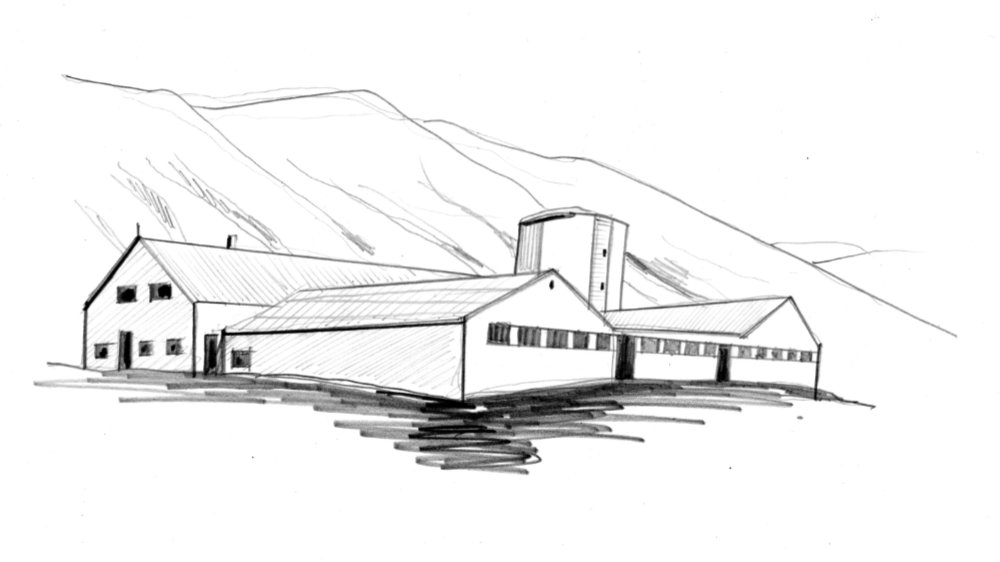Excerpts translated from the 2006 report “Hólar í Hjaltadal: Úttekt á Útihúsum” by Þorsteinn Gunnarsson.
The house was 22 meters long and 18.10 meters wide. As it rose, the land tilted to the west and the shape of the house took it into account. The charge is still in its original form and will be described later. The cowshed was a so-called single-cowshed, with a feeding passage to the east along the retaining wall, 16 stalls with concrete gables and intermediate structures and a spacious floor to the west along the outer wall.
In 1914 a concrete cowshed with a barn and manure house was built south and west of the schoolhouse according to a drawing by Rögnvaldur Ólafsson, the master builder of the state.
The cowshed was paneled inside and insulated with turf, equipped with self-flowing water and considered the most perfect cow in the North when it was built. The manure house was mostly buried and with large doors on both forks. In the center of the house was a long bar under rafters, supported by five concrete pillars. In 1948, the cowshed was broken down and the roof torn off the manure house and a new, large cowshed was built west of the barn according to a drawing by master builder Björns Rögnvaldssonar. The house is as far west as the original manure house and is 10 meters longer than the old cowshed, but compared to that, it has been 2.67 meters long to the north and 7.37 meters to the south. Shortly afterwards, in the summer of 1950, two concrete towers were built to the south of the barn.
